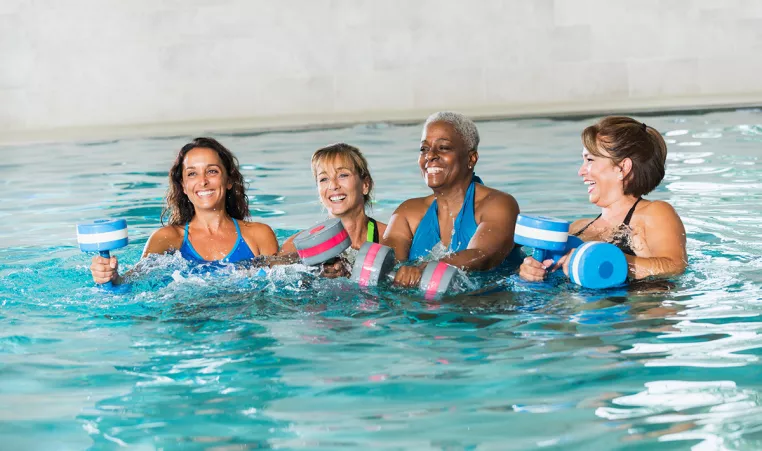Why You Need to Add Water Workouts to your Routine

A personal trainer at the Kennett Area YMCA, Mike LoBiondo is a retired teacher and coach with more than 20 years of experience in athletics and fitness. A CPR/AED Certified AAAI Certified Personal Trainer and a United States Marine Corps veteran, he likes to incorporate a variety of training principles and methods into fun and challenging workout programs. Mike will motivate you as you improve your strength, endurance, cardiovascular health and flexibility. The Kennett Area YMCA offers many opportunities for people to seek optimal wellness, and Mike enjoys being part of this community.
By Mike LoBiondo
Are you getting enough water in your workouts? Did the question make you think about how much water you consume while working out? Actually, “getting enough water” in this case means not putting the water in you, but rather putting you in the water! If you’re looking to improve your fitness with something dynamic and fun, water exercise is the perfect choice for a total body, cardio and strength training workout routine.
Water fitness doesn’t have to mean jumping in a pool and swimming laps. A well-designed aquatic workout includes activities for every person of every age and ability. Non-swimmers or anyone who is uncomfortable in a water environment can exercise in shallow depths with a wide assortment of specially-designed equipment for a safe and challenging training session. Equipment such as foam dumbbells and barbells, kickboards and pool noodles make water workouts challenging and fun.
Ready to get in the pool? Here are three reasons why you need to work in water workouts into your routine.
- Lessen the Impact
Low-impact workouts, such as aquatic workouts, are less stressful on our joints. Impact from dryland training is stressful on our feet, ankles, knees, hips and back. During a water workout, buoyancy alleviates most of the impact-related stress on these joints. In an aquatic workout, those with conditions such as arthritis will experience the benefits of joint movement without most of the impact. As a result, our joints are likely to increase their range of motion with less stress and strain than from exercising on dry land.
- Controlled Chaos
A water workout is a comprehensive workout. Water provides multi-directional resistance, or what I call, “chaotic movement”, for several muscle groups at once, which makes it easier to pack more into each training session. Using every muscle with and against other muscles means improved strength, endurance and flexibility. This also leads to greater balance among body parts.
For example, treading water requires both front and rear shoulder muscles to work in harmony, whereas many people who exercise tend to over develop the front of the shoulder at the expense of the rear shoulder. Water exercise demands that the body strain through the water and organic movements, rather than limiting movements to fixed plains, which is a common criticism of resistance machines. In a water environment, the only constant is resistance.
- Balance it All Out
Balance and stability are important exercise elements, and an aquatic exercise program is a safe option. Everyone -- especially older adults -- will benefit from improved balance. Water supports weaker or less-developed muscles and strengthens ancillary and subordinate muscles, leading to improved balance and stability. In the pool, the fear of falling is negated, so there is no risk of injury from falls. Our bodies constantly need to adapt to the instability of the water’s force.
Let’s dive in! Visit your local Y and ask how you can learn more about fun, challenging, and safe aquatic workouts for total fitness. Click here to find the best aqua group exercise class for you. Select your branch in the location filter at the top for best results.
Consult your doctor before beginning any workout regimen is recommended. Results vary by person. If you experience any pain or difficulty while exercising, immediately stop and consult your healthcare provider.